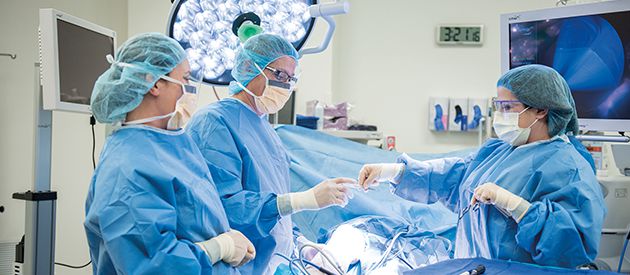Presbyopia – Age-related Decrease In Near Vision
Presbyopia is an age-related progressive reduction of the eye’s ability to focus on nearby objects. Presbyopia typically becomes perceptible in a person’s early to mid-40s and keeps deteriorating until about age 65. Presbyopia is generally thought to result from a natural aging process characterized by a gradual thickening and decrease in flexibility of the natural lens inside the eye. LASIK Vision Correction Surgery and Conductive Keratoplasty (CK) Surgery are surgical treatments for Presbyopia.
Astigmatism – Vision with Distorted Images
- LASIK surgery may be an option for patients with vision problems including Astigmatism.
- Astigmatism—The focus of near and distant vision is blurred when the cornea curves or flattens unevenly.
- Nearsightedness (myopia)—Light rays focus in front of the retina and blur distant vision, when the eyeball is a bit longer than usual or when the cornea curves too sharply.
- Farsightedness (hyperopia)—Light rays focus behind the retina and blur near vision and sometimes even distant vision as well, when they eyeball is a bit shorter than usual or when the cornea is too flat.
Cataracts – Clouding of the Lens of the Eyes
Cataracts are a continuous clouding of the lens of the eyes. It is the most common cause of vision loss in people over age 40 and is the principal cause of blindness in the world. Cataracts are due to the normal human aging process and usually develop in a person’s sixties or seventies. Cataract surgery is a procedure to remove the lens of the eye and typically, replace the clouded lens (cataract) with an artificial lens. Learn more about the physicians at Park Hill Surgery Center that treat cataracts by reviewing our website parkhillsurgerycenter.com.
Cataract Surgery – Replacing the Intraocular Lens
Cataract surgery is a procedure to remove the lens of the eye and typically, replace the clouded lens (cataract) with an artificial lens. When cataracts cloud the normally clear lens of the eye, an eye doctor (ophthalmologist) may recommend cataract surgery, which is a very common and generally safe procedure. The ophthalmologist performs cataract surgery as an outpatient procedure at Park Hill Surgery Center, which means the patient can go home the day of surgery.
Questions for Your Eye Doctor About Cataract Lens Replacements
Once the cataract has been taken out through one of the two surgical methods described above (phacoemulsification or extracapsular extraction), an artificial clear lens is implanted into the empty capsule of the lens. The lens implant is called an intraocular lens (IOL) and is made silicone, acrylic, or plastic. The lens does not require special care and becomes a long-term and durable part of the body. The patient will not be able to feel or see the lens. There is a variety of IOLs with different features, so the patient and surgeon should discuss which type is most beneficial and appropriate for the patient.
